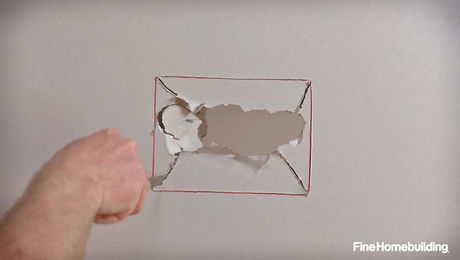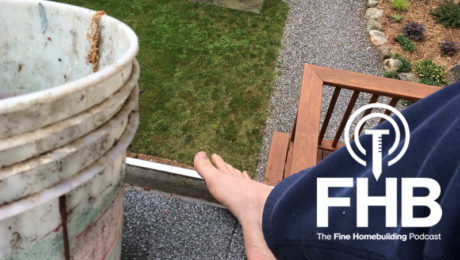Q:
I live in a two-story house with a basement. Water is supplied to the house from a well and a pump. The water goes from the bladder-type tank in the basement through a water softener and an electric water heater before it gets to any faucet. The pressure at the shower head on the second floor is significantly lower than the shower in the basement. How can I increase the pressure going to the second-floor showers?
Gregg Eads, Winchester, VA
A:
Rex Cauldwell, a master plumber and electrician in Copper Hill, Virginia, replies: The first thing to realize is that it takes 1 psi of pressure to push water up 2.3 ft. So in theory, you can lose 5 psi to 10 psi going from one floor to the next just by virtue of the vertical distance the water has to travel. However, the most common cause of low water pressure is restriction within the water system. In your case, the largest restriction is your water-conditioning system, which can lower the system pressure by as much as 10 psi before the water ever heads to the second floor. With a water-conditioning system in the line, it would not be uncommon to get less than 20 psi maximum to the second floor with a system that produces a maximum of 50 psi at the pump. I see this problem frequently, and there are several ways to approach it.
First, I recommend taking out the water restrictors in the upstairs faucets and shower heads. These water-saving devices are small discs about the size of a dime with a hole in the middle and are usually found inside the nut that attaches the shower head to the shower stem or inside the sink faucet aerator. Water restrictors are designed to reduce the high constant water pressures of municipal-water systems to conserve water. However, with the well and pump systems found in rural areas, water restrictors can reduce a second-floor shower to an annoying trickle. While you have the faucet aerators off, make certain that the screens are free of debris before you screw the aerators back on.
If there is a filter in the system, the filter cartridge must be kept clean. Dirty cartridges can slow the flow of water. All of the pipes in your system should be at least 1/2 in. in dia. Galvanized pipes can get clogged with rust and minerals, which reduce water pressure significantly. Also, all of the valves in the system, except for the valves under the sinks, should be full-flow valves that don’t restrict the flow of water when opened fully.
As a last resort, the pressure switch that controls the well pump can be adjusted to a higher pressure. The most common switch in these parts is made by Square D (1415 S. Roselle Road, Palatine, Ill. 60067; 847-397-2600), but switches from other companies have similar adjustments.
After removing the cover on the pressure switch, notice that there are two bolts with springs below the nuts. The bottoms of the springs rest on a pressure plate. Turn the nut on the tall bolt clockwise four to six revolutions, which increases both the lowend and high-end pressures at the same time. Don’t touch the nut on the short bolt.
Next, push the pressure plate down with your thumb to open the switch and activate the pump, taking care to avoid the electrical contacts. As the pressure comes up, tap the pressure gauge lightly to get an accurate reading (pressure gauges are notorious for sticking). When the pump shuts off, make sure the pressure is where you want it. Next, turn the circuit breaker off and drain the tank back to 0 psi water pressure. With a compressor or a tire pump, add air to the bladder tank to a level 2 psi under the cutin pressure. For example, if you’ve set the water pressure to a cut-in pressure of 40 psi, fill the air to 38 psi. Replace the switch cover, turn on the breaker, and then you and your pump should be back in business.
Be aware that increasing the tank pressure will probably shorten the life span of the bladder inside the tank. If you still don’t have enough pressure, a booster pump might have to be installed on the house side of the water-conditioning system. However, booster pumps are noisy and run every time you call for water. If you have any doubts about the procedures I just outlined, call on a qualified professional to do the job.


























